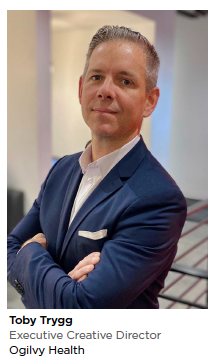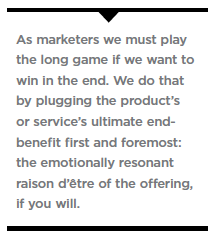 Wanna build a healthcare brand in 2020? Whether you are launching a new product or re-positioning a brand that has perhaps gotten a little long in the tooth, consider the following: Data is out. Belonging is in.
Wanna build a healthcare brand in 2020? Whether you are launching a new product or re-positioning a brand that has perhaps gotten a little long in the tooth, consider the following: Data is out. Belonging is in.
Put another way, to connect with today’s consumer, healthcare marketers must start treating their customers like those in the market for a high-end automobile. When was the last time you saw a commercial for a BMW, Mercedes, or Jaguar that featured its 0-60 time or top-end speed? Hint: you didn’t. Did that last banner ad you saw for a Lexus tell you that the luxury car has seating for five? Air conditioning? Cupholders that both heat and chill? A nice sound system? No.
But why not?, you might ask yourself. Aren’t these desirable facts and figures that I, as a consumer, need to know to make an informed decision on which $70,000 conveyance I am going to buy? They are. And they aren’t. These numbers only tell half the story of why people are attracted to certain brands of cars and favor them over others, the same goes for healthcare brands.
Creating an Emotional Appeal
The reason why? This is an emotional, not a rational appeal. These car brands have been built by catering to people’s left brains, their hearts, and their lizard-brain desire to belong — not a time on a stopwatch, a cylinder count, or other minutia listed on a spec sheet.
Why does this matter in the healthcare space? Simply because of the proliferation of data and our innate desire to center marketing efforts around it. And it sure is tempting.
 Data is good, yes. But here’s a newsflash: it’s also table stakes — the price of entry. Everyone is going to push their latest-approved acronym, whether it’s an ORR or a PASI score. That’s expected, and needs to be there. It also means you are entering into a sea of sameness. In short, it’s never going to build you a pharma brand. It might get a few more scripts written or devices ordered in the short-term, but as marketers we must play the long game if we want to win in the end. We do that by plugging the product’s or service’s ultimate end-benefit first and foremost: the emotionally resonant raison d’être of the offering, if you will.
Data is good, yes. But here’s a newsflash: it’s also table stakes — the price of entry. Everyone is going to push their latest-approved acronym, whether it’s an ORR or a PASI score. That’s expected, and needs to be there. It also means you are entering into a sea of sameness. In short, it’s never going to build you a pharma brand. It might get a few more scripts written or devices ordered in the short-term, but as marketers we must play the long game if we want to win in the end. We do that by plugging the product’s or service’s ultimate end-benefit first and foremost: the emotionally resonant raison d’être of the offering, if you will.
Societal Influences
Most importantly, as stated above, data does nothing to advance our consumers’ innate desire to belong. Even before COVID-19 forcefully separated us, the numbers bore out what is going on in society today:
89% of people used a cell phone during their last social interaction; 82% felt it degraded the conversation.
40% of Americans identify as lonely; up from 1 in 10 in the 1970s.
One in four Americans have no trusted confidante; up from 1 in 10 in 1985.
Fewer than half of American kids live in a traditional family home; a big decline in family households since the 1970s.
There’s been a 40% decline in standard measures of empathy since the 1990s.
Only about half of Americans trust their neighbors, and even fewer younger and more urban people trust their neighbors.
In 2020, it won’t pay to be the brand pushing your latest hard facts and figures to the forefront in lieu of tapping into and extolling your warm, fuzzy connection with the consumer to make them feel they belong. It is possible, and necessary, to do both. Numbers are the easy way out, and no one is going to question you for extolling them — but at what price paradise? Do it the right way — emotion/inclusion/invitation first, backed by numbers — and you’re halfway home. Halfway to, yes, belonging.(PV)
Ogilvy Health makes brands matter by keeping our audiences’ health, healthcare and wellness needs at the center of every touchpoint.
For more information, visit ogilvyhealth.com.











